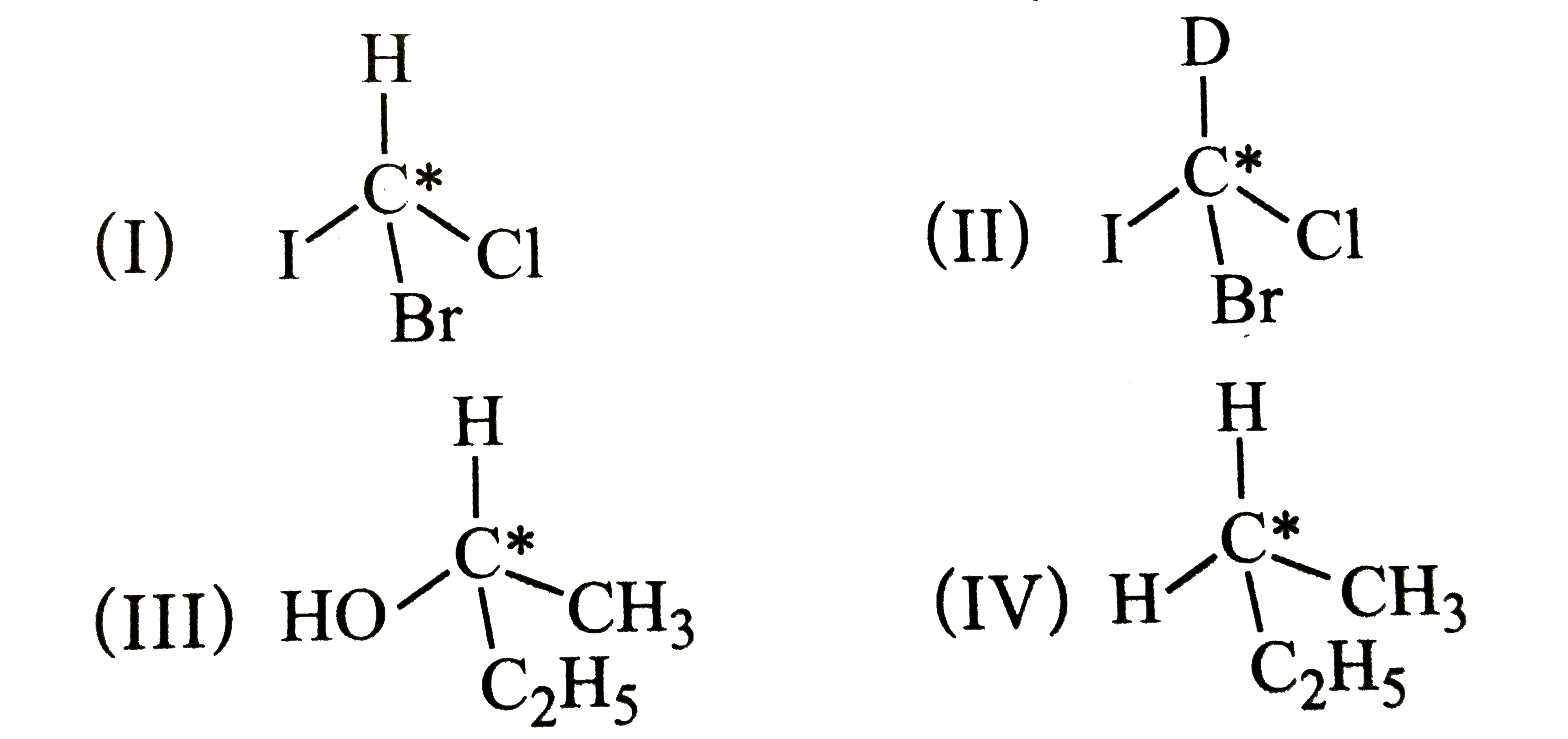In which of the following, carbon atom has sextet of electrons?
:CH2
⋅CH3
CH4
..(_)CH3
To determine which of the given options contains a carbon atom with a sextet of electrons, we need to analyze each option and count the number of electrons surrounding the carbon atom in each case.
1. Understanding Sextet of Electrons:
- A sextet of electrons means that the atom has six valence electrons.
2. Analyzing Each Option:
- Option 1: CH₂ (Methylene):
- The carbon atom in CH₂ is bonded to two hydrogen atoms.
- Each bond with hydrogen contributes 1 electron from carbon and 1 from hydrogen.
- Total electrons around carbon: 2 (from H) + 2 (from C-C bonds) = 4 electrons.
- However, carbon also has 2 lone electrons (not bonded), making a total of 6 electrons.
- Conclusion: Carbon has a sextet of electrons in CH₂.
- Option 2: CH₃ (Methyl):
- The carbon atom in CH₃ is bonded to three hydrogen atoms.
- Each bond with hydrogen contributes 1 electron from carbon and 1 from hydrogen.
- Total electrons around carbon: 3 (from H) + 1 (from C) = 4 electrons.
- Carbon has no lone pairs, so it has a total of 7 electrons (4 from bonds and 3 from C).
- Conclusion: Carbon does not have a sextet; it has 7 electrons.
- Option 3: CH₄ (Methane):
- The carbon atom in CH₄ is bonded to four hydrogen atoms.
- Each bond contributes 2 electrons (1 from C and 1 from H).
- Total electrons around carbon: 4 (from H) + 4 (from C) = 8 electrons.
- Conclusion: Carbon does not have a sextet; it has an octet (8 electrons).
- Option 4: CH₃⁻ (Methyl Anion):
- The carbon atom in CH₃⁻ is bonded to three hydrogen atoms and has an extra pair of electrons (due to the negative charge).
- Total electrons around carbon: 3 (from H) + 2 (from the lone pair) = 5 electrons.
- Conclusion: Carbon does not have a sextet; it has 8 electrons (3 from H and 2 from the lone pair).
3. Final Conclusion:
- The only option where the carbon atom has a sextet of electrons is Option 1: CH₂.
Summary:
- The carbon atom in CH₂ has a sextet of electrons, while the other options do not.
- A sextet of electrons means that the atom has six valence electrons.
- Option 1: CH₂ (Methylene):
- The carbon atom in CH₂ is bonded to two hydrogen atoms.
- Each bond with hydrogen contributes 1 electron from carbon and 1 from hydrogen.
- Total electrons around carbon: 2 (from H) + 2 (from C-C bonds) = 4 electrons.
- However, carbon also has 2 lone electrons (not bonded), making a total of 6 electrons.
- Conclusion: Carbon has a sextet of electrons in CH₂.
- The carbon atom in CH₃ is bonded to three hydrogen atoms.
- Each bond with hydrogen contributes 1 electron from carbon and 1 from hydrogen.
- Total electrons around carbon: 3 (from H) + 1 (from C) = 4 electrons.
- Carbon has no lone pairs, so it has a total of 7 electrons (4 from bonds and 3 from C).
- Conclusion: Carbon does not have a sextet; it has 7 electrons.
- The carbon atom in CH₄ is bonded to four hydrogen atoms.
- Each bond contributes 2 electrons (1 from C and 1 from H).
- Total electrons around carbon: 4 (from H) + 4 (from C) = 8 electrons.
- Conclusion: Carbon does not have a sextet; it has an octet (8 electrons).
- The carbon atom in CH₃⁻ is bonded to three hydrogen atoms and has an extra pair of electrons (due to the negative charge).
- Total electrons around carbon: 3 (from H) + 2 (from the lone pair) = 5 electrons.
- Conclusion: Carbon does not have a sextet; it has 8 electrons (3 from H and 2 from the lone pair).
- The only option where the carbon atom has a sextet of electrons is Option 1: CH₂.
- The carbon atom in CH₂ has a sextet of electrons, while the other options do not.
Topper's Solved these Questions
- ORGANIC CHEMISTRY : SOME BASIC PRINCIPLES AND TECHNIQUES BOOK - AAKASH INSTITUTE ENGLISHCHAPTER - ORGANIC CHEMISTRY : SOME BASIC PRINCIPLES AND TECHNIQUES EXERCISE - Assignment(SECTION-A)
68 Videos
- ORGANIC CHEMISTRY : SOME BASIC PRINCIPLES AND TECHNIQUES BOOK - AAKASH INSTITUTE ENGLISHCHAPTER - ORGANIC CHEMISTRY : SOME BASIC PRINCIPLES AND TECHNIQUES EXERCISE - Assignment(SECTION B)
6 Videos
- ORGANIC CHEMISTRY : SOME BASIC PRINCIPLES AND TECHNIQUES BOOK - AAKASH INSTITUTE ENGLISHCHAPTER - ORGANIC CHEMISTRY : SOME BASIC PRINCIPLES AND TECHNIQUES EXERCISE - Try Yourself
28 Videos
- MOCK_TEST_20BOOK - AAKASH INSTITUTE ENGLISHCHAPTER - MOCK_TEST_20EXERCISE - EXAMPLE
29 Videos
- ORGANIC CHEMISTRY: SOME BASIC PRINCIPLE AND TECHNIQUESBOOK - AAKASH INSTITUTE ENGLISHCHAPTER - ORGANIC CHEMISTRY: SOME BASIC PRINCIPLE AND TECHNIQUESEXERCISE - TRY YOURSELF
28 Videos
Similar Questions
Which of the following has 3∘ carbon
View SolutionTo which the following atom, the attachment of electron is most difficult ?
View SolutionTo which the following atom, the attachment of electron is most difficult ?
View SolutionWhich of the following elements has zero electron affinity ?
View SolutionIn which of the following molecule, central atom has more than 8 electrons in outermost orbit?
View SolutionIn which of the following molecules carbon atom marked with asterik (*) is asymmetric ?

View SolutionIn which of the following molecules carbon atom marked with asterisk (*) is asymmetric?

View SolutionWhich of the following has maximum of unpaired d- electrons ?
View SolutionWhich of the following has greatest tendency to lose electron ?
View SolutionIn which of the following compound has only one type of hybridised carbon atom?
View Solution
